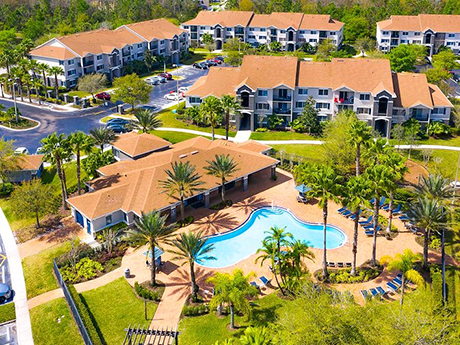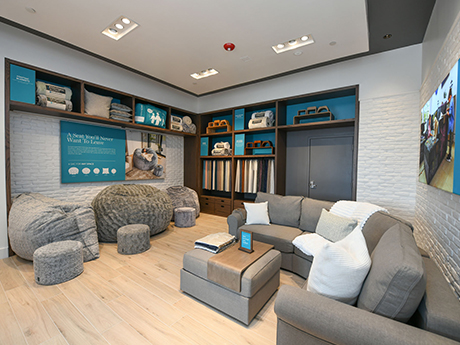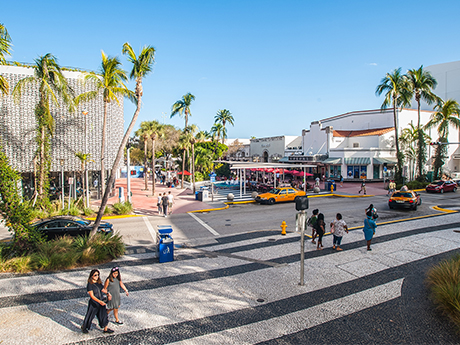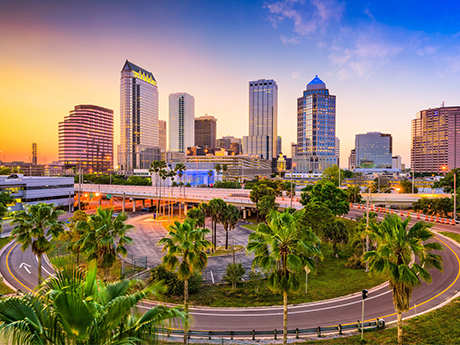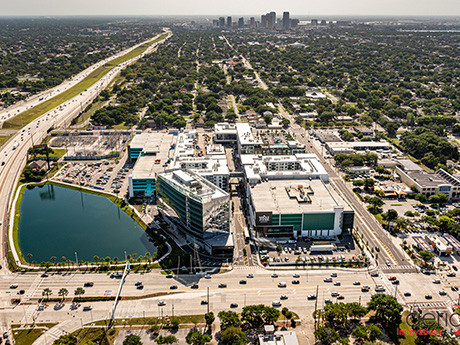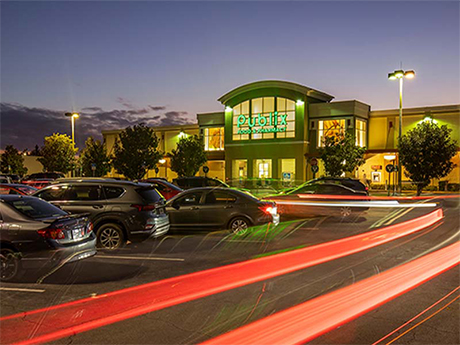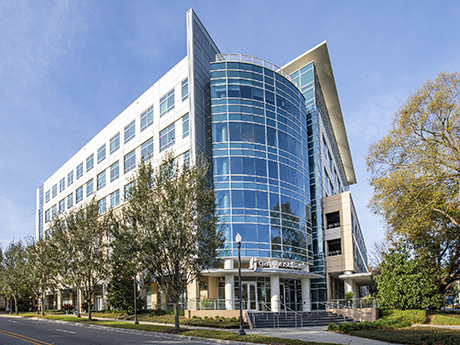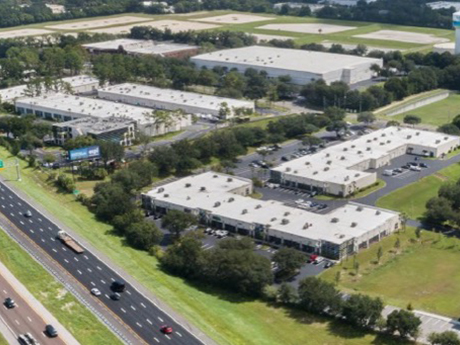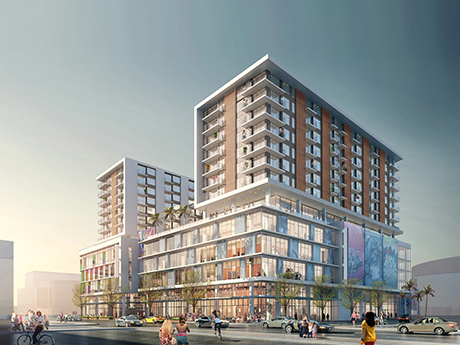Orlando remains one of the strongest multifamily markets nationally despite the slowdown being experienced in commercial real estate at large. Its strength is largely defined by growth in rent, supply, upcoming development opportunities, employment and the local economy, which have all contributed to healthy fundamentals. Being a top U.S. tourism destination has also helped with more than 74 million visitors coming to Orlando in 2022. Local tourism has created 212,000 jobs as of year-end 2021, and the city is home to nine world-renowned theme parks that are frequented by tourists. Orlando has also proven to be a very attractive and viable place to live long-term. The city is the fourth-largest in Florida, with an estimated population of more than 312,200 in 2023 and over 2 million within the metropolitan statistical area (MSA). The area’s population growth has supported multifamily growth opportunities, ensuring there is a vast renter pool and demand for the inventory that continues to be delivered. That has propelled rent growth up with submarkets like Colonial Town and Florida Center North, which are still posting year-over-year increases between 10 and 16 percent, significantly higher than the national average. Overall supply has also held up well with 6,103 units …
Market Reports
Central Florida retail is alive, well and growing, thanks in large part to Florida’s continuing resilience to the nation’s economic challenges. Thousands of people are moving to the state each week, the Orlando area’s economy continues to diversify beyond tourism and residents continue to show confidence with their retail spending. That said, there are significant challenges facing new retail developments, due to the cost of construction and other inflationary pressures. We expect this to be a major issue for the rest of this year, and it will require thoughtful planning for everyone involved in these projects. As we look at the remainder of 2023, we see two big takeaways: • For brick-and-mortar retail, it’s important for developers and owners to bring in concepts that are new and fresh. In some cases, this involves established retailers getting creative with their spaces, like what Macy’s is doing with its new Market by Macy’s concept, which uses a smaller footprint than traditional Macy’s stores. • To make new retail developments happen, developers, landlords and tenants need to be inventive in how they structure deals, whether it’s sharing in construction cost overages or giving tenants more time to get their spaces ready. With that …
A wave of new-to-market office tenants — specifically legal tenants following the influx of financial firms and tech companies — continue to expand their presence in Miami. The trend further solidifies the city’s spot as a top destination for companies seeking reduced taxes, strong talent and vibrant communities. Looking back at the first quarter of 2023, net absorption totaled over 81,000 square feet (compared to 76,000 square feet in the first quarter of 2022), marking the third-highest quarterly total since 2020. Most leasing activity occurred in the Central Business District (CBD) and in Class A product in Wynwood and Coral Gables as tenants continue to lease high-quality space. However, the lack of availability in quality product, as well as the overall economic uncertainty, has led to a slowdown in leasing volume to start 2023 — particularly among new-to-market tenants. Leasing activity totaled 750,000 square feet in the first quarter compared to 1.5 million in fourth-quarter 2022. The quarter closed with a 16.3 percent vacancy rate, the lowest level since the onset of the pandemic in early 2020. Class A availability fell 260 basis points to 21.1 percent year-over-year with the largest drops recorded in downtown Miami, which fell 540 basis …
Miami is a vivacious city renowned for its scenic beaches, sunny climate and dynamic nightlife. The South Florida city is also a hub for a flourishing retail industry, which serves an eclectic blend of both locals and visitors. Miami’s retail market is characterized by its diversity, with a broad spectrum of retailers ranging from luxurious, high-end boutiques to small, locally owned businesses. This range of retailers is a reflection of the city’s diverse population, which includes a sizable Hispanic community, as well as individuals from all corners of the globe. Consequently, Miami’s retailers must be adept at catering to a wide range of tastes. One of the most notable trends in the Miami retail market in recent years has been the growth of e-commerce. Like many other cities around the world, Miami has seen a significant increase in online shopping. This has presented both challenges and opportunities for retailers in the city. On the one hand, the rise of e-commerce has led to increased competition for brick-and-mortar retailers in Miami. Online retailers such as Amazon and Walmart have made it easier than ever for consumers to shop from the comfort of their own homes, and this has put pressure on …
Once bypassed by national developers and investors for larger, metropolitan cities like Miami, the real estate community is now realizing what locals have known for years: Tampa is trending. Tampa Bay’s recognition as one of the country’s top places to live has trickled into the region’s office market, which as of the first quarter of the year, has continued to reap the benefits. While some credit the Tom Brady effect to Tampa’s rise into the national spotlight, the Tampa Bay region is seeing growing demand in other economic sectors beyond sports, including housing, business and leisure. In fact, Time Magazine just featured Tampa as one of only four U.S. cities in its highly coveted 2023 list of the “World’s Greatest Places.” Flurry of activity to start 2023 For the first time in five quarters, the Tampa Bay office market recorded positive absorption of more than 55,000 square feet thanks to more companies moving into space rather than vacating it, JLL’s first-quarter Office Insight Report for 2023 shows. This can be largely attributed to Reliaquest’s move into its 140,000-square-foot headquarters located at Thousand & One Water Street, where it is currently occupying 120,000 square feet, and which made up the lion’s …
What was once a vacant landscape has undergone a modern-day renaissance, transforming into a thriving, energetic hub infused with dynamic retail, local chef-driven eateries and desirable living and working environments. Tampa has evolved into a top “a place to see” and “place to be” for both out-of-state guests and residents alike. What is one the main driving forces behind this urban revitalization? The rise of high-density mixed-use developments and lifestyle centers that create central spaces for people to live, work, play, shop, dine and explore new experiences. Recently, Florida has benefited from a massive influx of residents and development activity as a result of the COVID-19 pandemic. Varying demographics and age groups flocked to the Sunshine State in search of more space, agreeable weather and an expedient reopening as far as retail, restaurant and entertainment. Along with the mass of new residents, Tampa quickly rose to become the second most popular city in the country for prospective homebuyers, reflecting a new interest to settle down in the area. The retail sector also boomed state-wide, but specifically in Tampa, with retail rents growing 7.8 percent over the last 12 months and ranking among the top 10 fastest growing markets, according to …
The retail market in the Orlando MSA is doing well, on the surface. According to the numbers, the region has recovered from the effects of the COVID-19 pandemic. Orlando’s economy is heavily driven by tourism and when travel stopped and the initial state-wide shutdown orders went into effect on April 3, 2020, the impacts were profound and widespread, since four of the top 10 employers in Central Florida are in hospitality or retail, as well as Orlando International Airport. Since then, life in Central Florida has largely returned to normal. Tourism is back, hotel occupancy is up and people are dining out again. Retail numbers for the second quarter are actually better than in the first quarter of 2019, according to CoStar Group. The availability percentage at the beginning of 2019 was 5.9 percent, compared to 4.7 percent at the end of the second quarter. The average rent is up as well, rising from $21.94 per square foot to $25.52. Consumer habits have changed as e-commerce is still enormously popular, although it’s now more about convenience than mitigating risks. For those who can, working from home has become the preferred mode. As a consequence of the remote work trend, local …
The Orlando office market is finally seeing positive absorption across all major submarkets. An impressive second quarter recorded 122,423 square feet of positive absorption, bringing the total for the first half of the year to 156,778 square feet. As companies have been making decisions on their return to the office, the Orlando market has seen increased activity with numerous large, long-term leases signed, predominantly fueled by smaller local users and corporate relocations from other markets. Kimley-Horn’s relocation and expansion to 60,000 square feet in downtown Orlando marked one of the largest transactions in the past five years. While still up 20 basis points year-over-year, total vacancy saw its first drop in the last four quarters. Vacancy was consistently holding at 13.3 percent from third-quarter 2021 until it fell 30 basis points this quarter to 13 percent. The major driver of the drop was vacant sublease space being withdrawn or leased. Although firms are still seeking sublease route for their office space, we believe more space will be given back in the near term. We are seeing an increased pattern of flight to quality, where corporate users are focusing their attention on submarkets and assets that provide higher quality workplaces and …
Still going strong after two years since the onslaught of COVID-19, Orlando’s industrial market has seen a steady increase of robust leasing activity and development, with no signs of stopping. The growth is attributable to record-low vacancy, emerging construction and increasing demand from existing tenants expanding their businesses and new tenants in the market. Economic conditions affecting the market are similar to last year, as labor shortages and supply chain issues remain. However, the industrial sector overall has not been adversely affected. Orlando continues to be the place for existing business advancement and new business development. The city’s population growth outpaces that of any other city in Florida due to its central location, warm weather year-round, no state tax and relative affordability. As such, the market is seeing large enterprise retail and consumer goods companies claiming their stake in the Sunshine State. Robust leasing activity The total industrial leasing volume in the Orlando market for the second-quarter 2022 was 4.5 million square feet, 43 percent of the total leasing volume seen in 2021. Eight leases over 100,000 square feet were signed to date in 2022. The largest lease in the first half of 2022 was the new 294,787-square-foot Coca-Cola lease …
There is no denying in-migration is a driving factor in South Florida. Over 650,000 people moved to Miami at the height of the pandemic — nearly 89,000 came from out of state and a quarter of those came from New York. Year-over-year job growth is up 6 percent and is back at peak levels seen prior to the pandemic, while over 27 percent of employment is in office-using sectors for the first time ever. CBRE’s Spring 2022 Occupier Sentiment Survey revealed that most companies are back to developing long-term plans to expand or contract their office space now that employees are returning — at least some of the time — after two years of mostly remote work. For the second quarter in a row, net absorption in Miami totaled over 200,000 square feet, with the majority occurring in Miami’s central business district (CBD). Driven by expansions, Class A product accounted for approximately 85 percent of total absorption in the first quarter. The growth of Miami is starting to solidify as new-to-market tenants that looked to relocate to Miami during the pandemic are starting to move into their office spaces. Since 2020, over 1.3 million square feet of office leasing activity …


